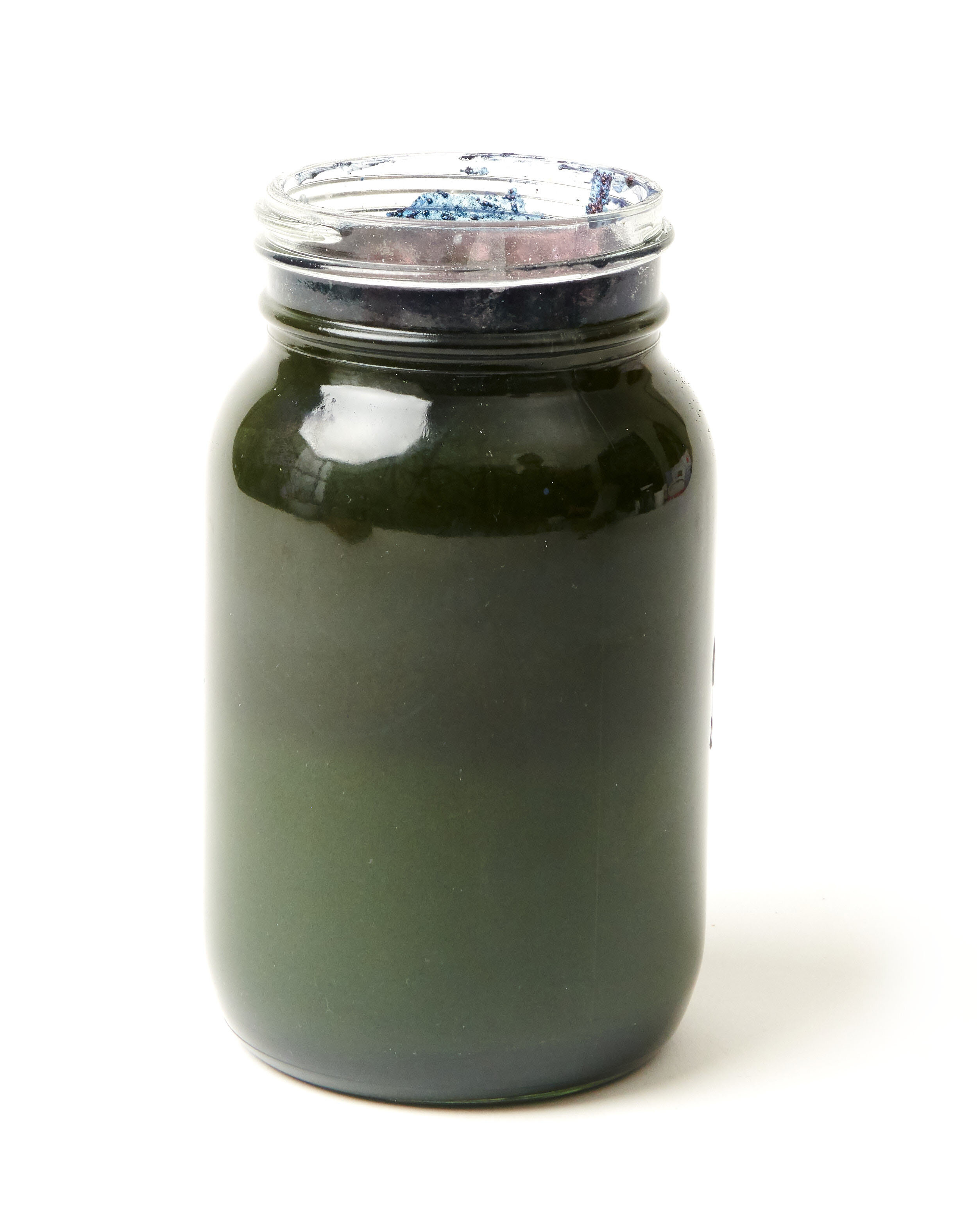THE WORKHORSE VAT
Our first choice for a vat is usually an organic vat. However, the workhorse vat is a very dependable alternative that is quick and easy to make. If you are new to indigo you may want to make a small workhorse vat to see how a successful vat behaves before moving on to one of the organic vats. As for all indigo vats, three things are necessary: 1) Indigo, 2) A reducing agent, 3) A base.
INDIGO
We recommend natural indigo in powder form.
A REDUCING AGENT
Maiwa uses thiourea dioxide as a reducing agent in the workhorse vat because it has a long shelf-life and can be disposed of safely.
A BASE
We recommend calx (calcium hydroxide) as a base. There are two alternatives to calx: lye and soda ash. Lye is a strong base and as such should be treated with caution. The casual use of lye around the home studio is not recommended. Soda ash is less caustic than lye and is a good alternative. If using soda ash the vat may reduce more slowly and may need the pH checked more often.
The Workhorse Vat
Review the instructions for indigo vats. Don’t forget to scour your cloth or yarn before dyeing.
For a vat of about 20 litres
PREPARATION OF THE STARTER SOLUTION
— 15 g (2 tablespoons, 1/2 oz) indigo
— 4 g (1 teaspoon .14 oz) thiourea dioxide
— 30 g (4 tablespoons, 1 oz) calx (calcium hydroxide)
instead of calx you may substitute:
— 10 g (1.5 teaspoons) of lye
OR — 60 g (4 tablespoons) of soda ash.
Caution: a mask should be worn to avoid inhaling any powders; especially lye, soda ash, calx or thiourea dioxide.
1. Fill a 1 litre (1 quart) mason jar with hot water, add the calx (or lye or soda ash) and stir until dissolved.
2. Add the indigo and gently stir for 2 minutes (chopsticks work well for this).
3. Add the thiourea dioxide and stir for about a minute. Do not close the jar.
As the starter reduces, the colour of the surface of the liquid will change to a purplish violet with a coppery sheen. Below the surface the solution will change from an opaque blue to a translucent yellow-green. This may take about 30 - 60 minutes.
If reduction is slow, set jar aside in a warm room (or place it in a bath of warm water) for about 60 minutes. Check the stock solution to see if it is ready by dribbling some solution on the side of a white cup. If it changes from clear yellow to opaque blue as the indigo oxidizes — it is ready.
The stock solution may be used immediately or kept for later (up to a week). If kept longer than a week the solution may need to be revived. Heat gently to about 50°C (120°F) and add some more reducing agent (thiourea) and stir well.
PREPARATION OF THE VAT
— 4 g (1 teaspoon) thiourea dioxide
— 4 g (1.5 teaspoons) calx (calcium hydroxide)
instead of calx you may substitute:
— 1 g (1/8 teaspoons) of lye.
OR — 120 g (8 tablespoons) soda ash
This vat does not need maintained heat and so you can use a plastic container.
1. Put 4 gallons (15L) of hot water 50°C (120°F) into your vat.
2. Add the calx (or lye or soda ash) into the water and stir until dissolved. This makes the vat slightly alkaline so that the reduced indigo from the stock solution does not re-oxidize when added.
3. Add 4 g (1 teaspoon) of thiourea dioxide and stir gently until dissolved. Allow the vat to reduce for about 15 minutes.
4. Carefully lower the jar of stock solution into the vat. Avoid pouring from above as this adds oxygen. Transfer the contents of the jar completely.
5. Stir to create a vortex. Then allow 30-60 minutes for the vat to turn yellowish green. Check the pH. The pH of a new vat should be 11 (the correct for cellulose). If dyeing protein fibres, wait for the pH to lower to 10.
Now you are ready to dye.
In a well maintained vat, 15 grams (1/2 oz) of indigo will dye approximately 450 g (1 pound) of fibre a dark blue. It will dye 900 g (2 pounds) of fibre a medium blue. This recipe can be doubled, halved, or made in any size so long as the proportions remain the same.
NOTE: If using this vat in combination with other natural dyes, we recommend doing the indigo first as the thiourea (particularly in a new vat) may discharge some colours.
Maiwa has an indigo kit with natural indigo, calx, thiourea and printed instructions.




